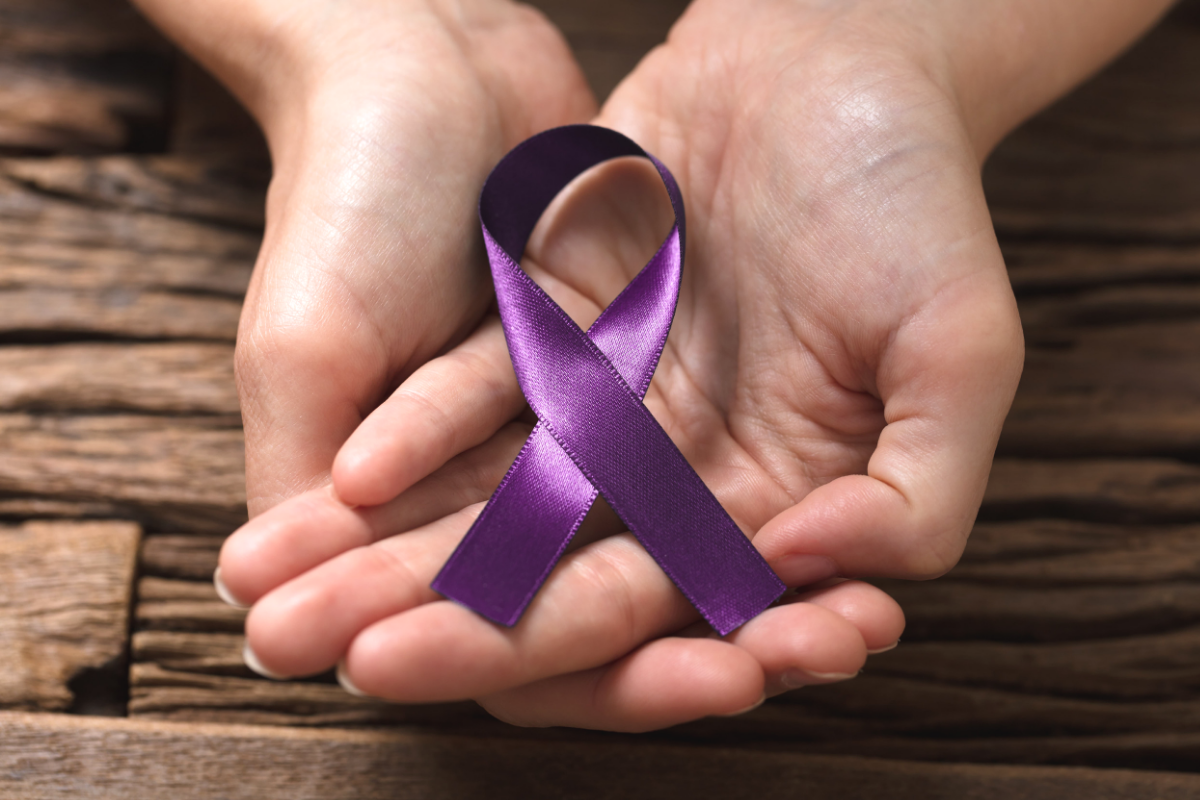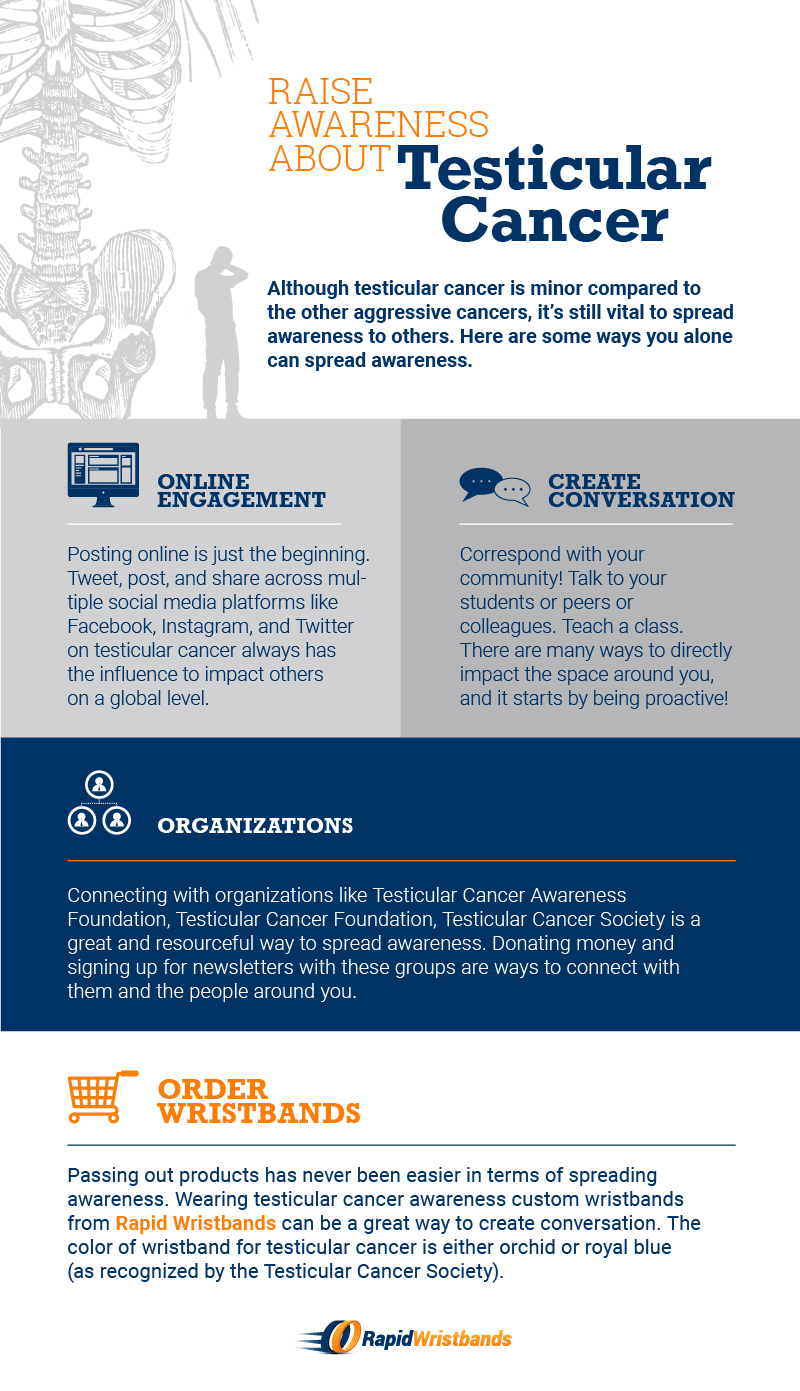
April is Testicular Cancer Awareness Month, so we are covering testicular cancer for this week’s blog post.
Below is what you need to know if you or a loved one is impacted by testicular cancer.
![]() Facts
Facts![]() Signs
Signs![]() Risks
Risks![]() Prevention
Prevention![]() Awareness
Awareness
What Is Testicular Cancer?
Testicular cancer is when cells reproduce abnormally in the testes, or testicles, which are male reproductive organs. They are each the size of a golf ball, on average, and rest below the penis in the scrotum. When affected by cancer, they become swollen, heavy, or sore due to the lump, or tumor, that has developed. (1)
Testicular Cancer Facts and Statistics
According to the American Cancer Society, there are about a little over 400 deaths and nearly 10,000 cases in 2019. (2)
Fortunately, testicular cancer is not a common disease. Roughly 1 in 250 men will develop testicular cancer at some point in their lifetime. (3)
Signs and Symptoms
As mentioned earlier, testicles with lumps or a tumor may feel swollen, heavy, or sore. But there may be more symptoms. With advanced testicular cancer, there will be: (4)
- Back pain (from spreading to the lymph nodes).
- Shortness of breath, chest pain, or cough (from spreading to the lungs).
- Stomach pain (from spreading to the liver).
- Headaches or confusion (from spreading to the brain).
Risk Factors
The cause of testicular cancer is still unknown, but some risk factors have been identified. They include: (5)
- Undescended testicle
- Family history
- HIV infection
- Ethnicity
- Body size
- Previous diagnosis
- Carcinoma
Prior injury or trauma to the testicles most likely does not have any correlation to getting cancer.
Prevention and Treatment
Unfortunately, there is really no way to prevent testicular cancer. Doctors recommend regular self-exams to discover cancer at its earliest stages. Testicular cancer is most common between the ages of 15 and 35 so checking regularly doing these years is highly recommended. (6)
Treatment for testicular cancer depends on the individual, but it overall consists of surgery, radiation, and chemotherapy. Take caution, though, since some treatments involve toxic chemicals and may cause infertility. To avoid this, it’s best to donate sperm before treatments take place. (7)
Raising Awareness for Testicular Cancer
Although testicular cancer is minor compared to the other aggressive cancers, it’s still vital to spread awareness to others.
Here are some ways you can spread awareness.
Online Engagement
Share your story online and on social media to inform and encourage others who may be going through the same things you have gone through. Your voice matters. Your story matters.
Organizations
Connecting with organizations like Testicular Cancer Awareness Foundation, Testicular Cancer Foundation, Testicular Cancer Society is a great and resourceful way to spread awareness. Donating money and signing up for newsletters with these groups are ways to connect with them and the people around you.
Create Conversation
Have conversations in your community! Talk to your students or peers or colleagues. Teach a class. There are many ways to directly impact the space around you, and it starts by being proactive!
Order Wristbands
Passing out products has never been easier in terms of spreading awareness. Wearing testicular cancer awareness custom wristbands from Rapid Wristbands can be a great way to create conversation. The color of wristband for testicular cancer is either orchid or royal blue (as recognized by the Testicular Cancer Society).

Final Thoughts
It’s important to know the ins and outs of testicular cancer and how you can spread awareness. A little bit can go a long way - it can be as big as donating millions to a foundation, or as small as wearing a wristband. Order your testicular cancer awareness bracelet by clicking the button below!
Resources:
.png)
.png)
.png)



.png)
.png)

.png)
.png)
.png)
.png)
.png)
.png)
.png)
.png)
.png)
.png)
.png)
